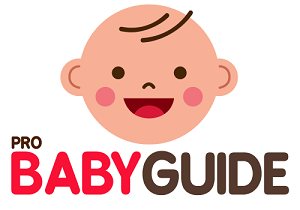Watching a newborn slumber is a study in pure, unadulterated innocence. Their tiny chests rise and fall rhythmically, their faces soften into peaceful expressions, and often, their arms stretch upwards, seemingly reaching for the heavens. This adorable pose, affectionately dubbed the “surrender position” or the “wing position,” is a common sight in babyhood, leaving many parents wondering: why do babies sleep with their arms up? The mystery of babies sleeping with arms up has intrigued caregivers for generations, but there are several compelling reasons behind this seemingly universal behavior, rooted in biology, development, and comfort.
Developmental Origins: The Remnants of the Womb
The most fundamental explanation for this upward arm posture lies in the baby’s recent journey through the womb. For nine months, they were nestled in a confined space, curled up in the fetal position. This position, with limbs flexed and close to the body, was not only comfortable but also necessary for optimal growth within the limited space of the uterus. After birth, babies retain some of this fetal posture, gradually extending their limbs as they adapt to their newfound freedom.
Specifically, the “Moro reflex,” also known as the startle reflex, plays a significant role in this phenomenon. This reflex, present from birth, causes a baby to suddenly extend their arms and legs, often accompanied by crying, in response to a sudden noise or movement. While the Moro reflex typically fades within a few months, it can contribute to babies sleeping with their arms up, particularly during light sleep cycles. Even when not fully triggered, the lingering instinct to extend their limbs can manifest as a more relaxed, upward stretch.
Furthermore, the development of muscle tone influences a baby’s posture. Newborns have limited muscle control, and their extensor muscles, which straighten the limbs, are often stronger than their flexor muscles, which bend them. This imbalance can lead to a natural tendency for the arms to extend upwards, especially during sleep when muscle tension is relaxed. As babies grow, their muscle tone develops, and they gain more control over their movements, gradually transitioning away from this extended arm position.
Comfort and Temperature Regulation: Finding Their Sweet Spot
Beyond developmental factors, comfort plays a crucial role in a baby’s sleep posture. Babies, like adults, seek positions that feel secure and soothing. For many, sleeping with their arms up provides a sense of openness and freedom, allowing them to stretch out and relax. This position can also help regulate their body temperature. By extending their arms, babies may be able to dissipate heat more effectively, preventing overheating, especially in warm environments.
Moreover, some experts believe that this posture can help babies self-soothe. By raising their arms, they may be able to access their hands and fingers, which they can suck on for comfort. Sucking is a natural soothing mechanism for infants, providing them with a sense of security and relaxation. This access to their hands can be especially beneficial during light sleep cycles when they are more prone to waking up.
Additionally, consider the simple logistics of a baby’s sleep environment. Many babies are swaddled in their early weeks, which involves wrapping them snugly in a blanket. While swaddling can be incredibly comforting and promote sleep, it can also restrict movement. As babies begin to outgrow swaddling, they may naturally extend their arms upwards to explore their newfound freedom of movement. This can become a preferred position as they transition to sleeping without a swaddle.
Brain Development and Sensory Exploration: Learning Through Movement

The upward arm position may also be linked to the rapid brain development occurring during infancy. Babies are constantly learning about their bodies and their environment through sensory exploration. Movement plays a crucial role in this process, allowing them to develop their motor skills and spatial awareness. By raising their arms, babies are exploring the range of motion in their limbs and discovering their body’s capabilities.
This exploration can be particularly pronounced during sleep, as babies transition between different sleep stages. During light sleep, they may move more frequently, testing their muscles and reflexes. This movement can contribute to the upward arm posture, as they experiment with different positions and discover what feels comfortable.
Furthermore, some researchers suggest that this position may be related to the development of proprioception, the sense of body position and movement. By extending their arms, babies are receiving feedback from their muscles and joints, helping them to understand where their limbs are in space. This sensory input is essential for developing motor coordination and spatial awareness.
In essence, babies sleeping with their arms up is a multifaceted phenomenon influenced by a combination of developmental, comfort, and sensory factors. It’s a natural and harmless behavior that typically resolves as babies grow and develop.
Read More: The Must-Have Habits for Your Little One: An Experienced Parent’s Guide
People Also Ask (FAQs)
Q: Is it safe for my baby to sleep with their arms up?
A: Yes, it is perfectly safe for babies to sleep with their arms up. This position is a natural and common behavior in infants and does not pose any risks to their health or development.
Q: Will my baby always sleep with their arms up?
A: No, babies typically outgrow this position as they develop better muscle control and gain more awareness of their bodies. The upward arm posture usually fades within the first few months of life.
Q: Can I do anything to prevent my baby from sleeping with their arms up?
A: There is no need to prevent your baby from sleeping with their arms up. It is a natural and harmless behavior. However, if you are concerned about your baby’s comfort, you can try swaddling them or using a sleep sack, which can provide a sense of security and restrict movement.
Q: My baby seems to startle easily and raise their arms. Is this normal?
A: Yes, this is likely the Moro reflex, a normal and healthy reflex in newborns. It typically fades within a few months. If you are concerned about your baby’s startle reflex, consult with your pediatrician.
Q: My baby sleeps with one arm up and one arm down. Is this also normal?
A: Yes, it is perfectly normal for babies to sleep with one arm up and one arm down. Babies have varying preferences for sleep positions, and this is just one example.
Q: My baby is older than six months and still sleeps with their arms up. Should I be concerned?
A: While it is less common for older babies to sleep with their arms up, it is not necessarily a cause for concern. However, if you have any concerns about your baby’s sleep habits or development, it is always best to consult with your pediatrician.
Q: Does sleeping with arms up relate to SIDS?
A: No, there is no known link between babies sleeping with their arms up and Sudden Infant Death Syndrome (SIDS). SIDS is a complex issue with multiple contributing factors, and sleeping position is just one aspect to consider. Always follow safe sleep guidelines, such as placing your baby on their back to sleep on a firm, flat surface.
Q: Can swaddling help with the arm raising during sleep?
A: Yes, swaddling can help to limit arm movements during sleep, especially in younger infants. However, it’s crucial to stop swaddling once your baby starts showing signs of rolling over, as it can become unsafe.
Q: Are there any specific sleep positions I should encourage?
A: The safest sleep position for babies is on their back. It’s not necessary to try and change the position of the arms, just ensure they are on their back.
Q: Does room temperature affect the baby raising their arms?
A: Yes, room temperature can affect the baby’s comfort and thus their arm positioning. Babies may raise their arms to cool down if they are feeling too warm. Ensure the room temperature is comfortable and appropriate.
Conclusion
The sight of a baby sleeping with their arms reaching upwards is a universal image of infant innocence and vulnerability. While it may seem like a simple quirk, this behavior is rooted in a complex interplay of developmental, comfort, and sensory factors. From the lingering remnants of the fetal position to the exploration of movement and temperature regulation, babies find their own unique ways to navigate their newfound world. As parents, we can appreciate the beauty and wonder of this natural behavior, knowing that it is a temporary phase in their journey of growth and discovery. By understanding the underlying reasons behind this upward reach, we can provide our babies with the comfort and support they need to thrive, ensuring they sleep soundly and peacefully, arms reaching towards their bright future.
Read More:
Baby’s Got the Sniffles? Tips to Keep Your Little One Healthy!




